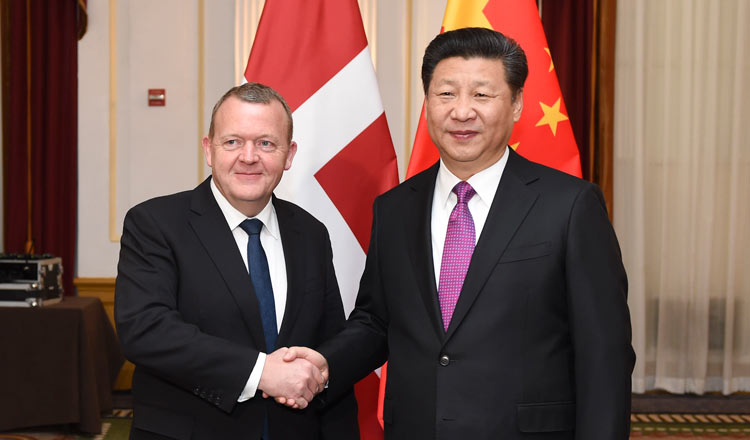Shanghai set for huge science role within three years
Updated: 2016-03-31 07:40
By Zhang Yue(China Daily)
|
||||||||
China will make Shanghai a comprehensive science center within three years by implementing systematic innovation reform, it was decided on Wednesday during an executive meeting of the State Council presided over by Premier Li Keqiang.
Additionally, new independent districts for innovation will be established in Central, East and Northeast China in an effort to boost innovation-driven development and supply-side economic reform.
The three regions involved are Henan province (Zhengzhou, Luoyang and Xinxiang), the Shandong Peninsula and Liaoning province (Shenyang and Dalian).
At the meeting, the State Council, China's Cabinet, decided that Shanghai will enjoy more flexible policies in research funding, the transfer of scientific research findings and collaboration between universities and local enterprises. Companies' innovation activities will also face fewer local government hurdles.
The municipality will also experiment with streamlining foreign investment procedures.

In 2014, 83.1 billion yuan ($12.82 billion) went toward research and development in Shanghai, accounting for 3.6 percent of its GDP. In May last year, the city approved a plan to establish itself as a technological innovation center.
Lin Lei, a researcher at the Center for Innovation and Development at the Chinese National Academy of Sciences, believes Shanghai was chosen because it has taken quick steps to welcome innovation talent and strong collaboration with overseas companies.
"The city carried out favorable policies to attract overseas talent years ago," Lin said.
Since 2009, China has set up 11 self-innovation demonstration areas, including the Zhongguancun technology hub in Beijing, which was the first such area.
Shi Yulong, a researcher of China's regional economy at the Academy of Microeconomic Research at the National Development and Research Center, said such policies are designed to boost industrial upgrading in central and northern China as part of the country's economic transition effort.
"China's east, central and west regions have faced a large economic gap due to the opening-up policy in the 1980s," Shi said. "Now a gap is emerging between the north and the south, as northern China faces bigger challenges in upgrading such industries as iron, steel and coal."
Shi believes the three regions chosen on Wednesday for innovation districts were selected due to their advantages in innovation infrastructure. Liaoning province, for example, has taken strides in robot research and sales.
- Science association to get rid of bureaucracy
- Chinese VP asks for more science, tech cooperation with Egypt
- Hospital extracts medical science from Dunhuang manuscripts
- China calls for reform of science and technology associations
- Students experience science in PE classes
- Inner Mongolia gets earthquake science museum
- Association for Science and Technology awarded by Golden Bridge Project
- Science minister highlights technology sales success
- Cypriot court remands in custody man suspected of hijacking EgyptAir flight
- Govt eyes luxury tourists amid concerns over safety
- Sleep tight and don't let sharks bite at Paris aquarium
- Aung San Suu Kyi appointed as Myanmar's new foreign minister
- Hollande promises to tighten Euro 2016 security
- US officials applaud China for nuclear cooperation

 Discover beautiful China in Spring blossom (II)
Discover beautiful China in Spring blossom (II)
 Xi tells Obama disputes should avoid misunderstandings
Xi tells Obama disputes should avoid misunderstandings
 Xi calls for bigger progress in China-Denmark ties
Xi calls for bigger progress in China-Denmark ties
 Chinese president arrives in Washington for Nuclear Security Summit
Chinese president arrives in Washington for Nuclear Security Summit
 President Xi presented with 'key to Prague'
President Xi presented with 'key to Prague'
 China move into the final stage of Asia qualifiers after 15 years
China move into the final stage of Asia qualifiers after 15 years
 Grief, anger engulf Taiwan as suspected killer of girl arrested
Grief, anger engulf Taiwan as suspected killer of girl arrested
 Stolen Buddha statue head arrives in Hebei museum
Stolen Buddha statue head arrives in Hebei museum
Most Viewed
Editor's Picks

|

|

|

|

|

|
Today's Top News
Marriott unlikely to top Anbang offer for Starwood: Observers
Chinese biopharma debuts on Nasdaq
What ends Jeb Bush's White House hopes
Investigation for Nicolas's campaign
Will US-ASEAN meeting be good for region?
Accentuate the positive in Sino-US relations
Dangerous games on peninsula will have no winner
National Art Museum showing 400 puppets in new exhibition
US Weekly

|

|








